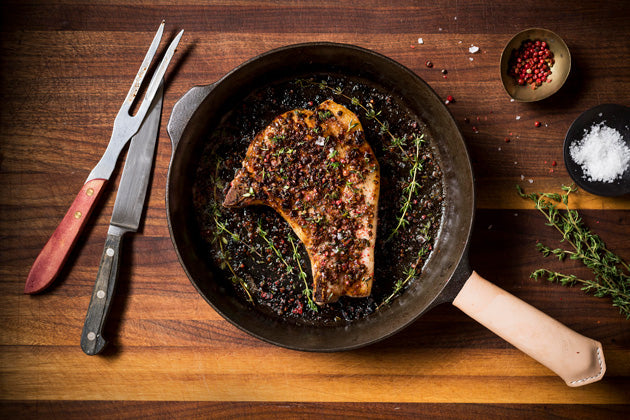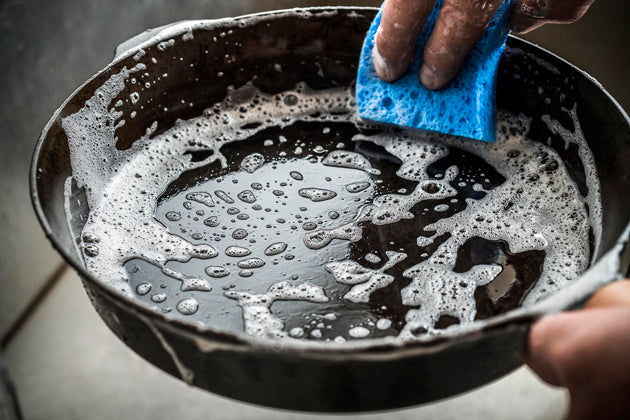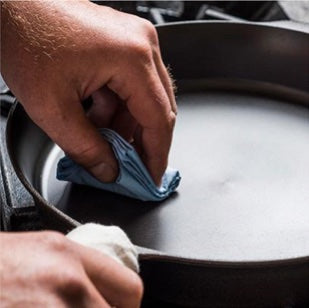Why does cast iron rust?
Even a well-seasoned cast iron pan will rust if it’s exposed to prolonged moisture and air. That could mean a spot of water, an insufficiently dried-out skillet, or even humid air in a hot environment. The process is simple chemistry; in the presence of moisture, iron molecules react with oxygen molecules on a chemical level to form iron oxide, aka rust. Left to its own devices, this redox reaction will eventually convert the entire mass of iron into iron oxide. It’d take decades for a hunk of metal the size of a cast iron pan to decompose, but iron oxide does weaken the atomic bonds in cast iron, and can eventually cause pitting that damages seasoning.
If your pan has developed rusty patches that don’t wipe away with a lightly oiled paper towel, gently scrub the affected area with a tablespoon of kosher salt as an abrasive. Ease your way into more abrasive sponges, then Barkeepers Friend, with #00 steel wool as a last resort. Your goal is use the gentlest tools possible so you don’t damage layers of well-earned seasoning.
Once you’ve cleared the patch of rust away, dry the pan with a kitchen towel, then place it on a stove on low heat for 10 minutes to completely dry the surface. Some of the rust may re-appear at this stage; this is normal. Pour ¼ teaspoon of oil or solid fat (we recommend a saturated fat like coconut oil) onto the affected area and use a clean paper towel to wipe it into the metal. Wipe away all excess fat—you shouldn’t see any oil sheen—and return the pan to low heat for 10 minutes to bake the fat in.
If all that scrubbing has removed some seasoning, you’ll want to re-season the pan in the oven once or twice. Follow our cast iron seasoning instructions, and start cooking!
Remember, the best way to treat rust is to prevent it from happening in the first place: whenever you use your pan, make sure it’s thoroughly dry after cleaning, and well-oiled before you put it away.












